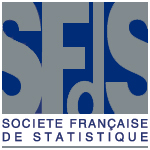A Primer on causality in data science
Résumé
Many questions in Data Science are fundamentally causal in that our objective is to learn the effect of some exposure, randomized or not, on an outcome interest. Even studies that are seemingly non-causal, such as those with the goal of prediction or prevalence estimation, have causal elements, including differential censoring or measurement. As a result, we, as Data Scientists, need to consider the underlying causal mechanisms that gave rise to the data, rather than simply the pattern or association observed in those data. In this work, we review the “Causal Roadmap” of Petersen and van der Laan (2014) to provide an introduction to some key concepts in causal inference. Similar to other causal frameworks, the steps of the Roadmap include clearly stating the scientific question, defining of the causal model, translating the scientific question into a causal parameter, assessing the assumptions needed to express the causal parameter as a statistical estimand, implementation of statistical estimators including parametric and semi-parametric methods, and interpretation of our findings. We believe that using such a framework in Data Science will help to ensure that our statistical analyses are guided by the scientific question driving our research, while avoiding over-interpreting our results. We focus on the effect of an exposure occurring at a single time point and highlight the use of targeted maximum likelihood estimation (TMLE) with Super Learner.

